 W
WPrince Adalberto of Savoy, Duke of Bergamo was an Italian General and a member of the Genoa branch of the House of Savoy.
 W
WPrince Aimone, 4th Duke of Aosta was a prince of Italy's reigning House of Savoy and an officer of the Royal Italian Navy. The second son of Prince Emanuele Filiberto, Duke of Aosta he was granted the title Duke of Spoleto on 22 September 1904. He inherited the title Duke of Aosta on 3 March 1942 following the death of his brother Prince Amedeo, in a British prisoner of war camp in Nairobi.
 W
WVittorio Ambrosio was an Italian general who served in the Italo-Turkish War, World War I, and World War II. During the last phase of World War II Ambrosio supported the fall of Benito Mussolini and Italy’s eventual renunciation of the German alliance.
 W
WPrince Amedeo, 3rd Duke of Aosta was the third Duke of Aosta and a first cousin, once removed of the King of Italy, Victor Emmanuel III. During World War II, he was the Italian Viceroy of Italian East Africa.
 W
WBenedetto of Savoy was an Italian nobleman and military leader, who was prince of Savoy and Duke of Chablais. He was born in the reign of his father Charles Emmanuel III, King of Sardinia. He married his niece and was the owner of the Palazzo Chiablese in Turin; the two did not have descendants.
 W
WOttavio Briccola was an Italian general. He was the first Italian governor of Cyrenaica after he had participated in the Italo-Turkish War.
 W
WBenedetto Brin was an Italian naval administrator and politician.
 W
WCharles Albert was the King of Sardinia from 27 April 1831 until 23 March 1849. His name is bound up with the first Italian constitution, the Albertine Statute, and with the First Italian War of Independence (1848–1849).
 W
WCharles Emmanuel III was the Duke of Savoy and King of Sardinia from 1730 until his death.
 W
WDomenico Corcione was an Italian military staff and defence minister of Italy.
 W
WVittorio Emilio Cuniberti was an Italian military officer and naval engineer who envisioned the concept of the all big gun battleship, best exemplified by HMS Dreadnought.
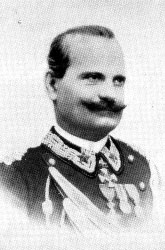 W
WVittorio Emanuele Dabormida, 2nd Count Dabormida, OSML, OCI was an Italian general and noble, mostly known for his role during the First Italo-Ethiopian War. He died in combat at Adwa, and was posthumously awarded the Gold Medal of Military Valor.
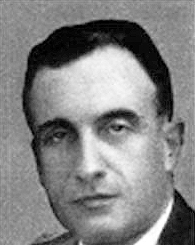 W
WLorenzo "Renzo" Dalmazzo was an Italian lieutenant general and corps and army commander during World War II.
 W
WEmmanuel Philibert was Duke of Savoy from 1553 to 1580. He is remembered for the Italianization of the House of Savoy, as he recovered the savoyard state following the Battle of St. Quentin (1557) and subsequently moved the capital to Turin and made Italian the official language in Piedmont.
 W
WLieutenant General Danilo Errico is an Italian Army officer, who was Chief of Staff of the Italian Army from 27 February 2015 to 27 February 2018.
 W
WPrince Ferdinando of Savoy, 3rd Duke of Genoa was the third Duke of Genoa and a member of the House of Savoy. He was an admiral in the Royal Italian Navy.
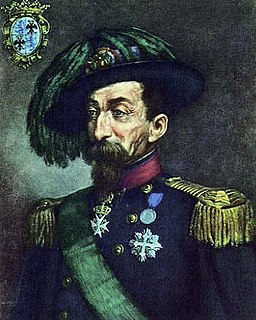 W
WAlessandro Ferrero La Marmora was an Italian general who is best remembered for founding the military unit known as the Bersaglieri. Two of his brothers were Alfonso Ferrero La Marmora and Alberto Ferrero la Marmora, the naturalist.
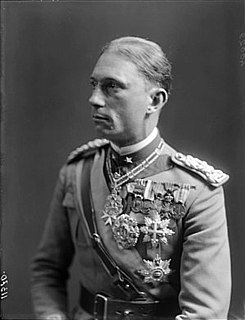 W
WPrince Filiberto of Savoy, 4th Duke of Genoa was the fourth Duke of Genoa and a member of the House of Savoy.
 W
WEnrico Gotti was an Italian General in the service of the Italian Army and the commander of the Italian forces in the Italian held Vlora in 1920. He died during the Battle of Vlora in Albania, killed in action.
 W
WAlessandro Guidoni served as a general in the Regia Aeronautica. Guidonia Montecelio, the small town and comune where he died while testing a new parachute, was named after him in 1937.
 W
WCarlos Julião was a Luso-Italian artist and engineer of the Portuguese colonial army, working as a fortress inspector during the second half of the 18th century and beginning of the 19th century. He is more known for his watercolor drawings, portraying the different racial and social types inhabiting the Portuguese empire, as well as the period and methods of mining in Brazil.
 W
WAlfonso Ferrero La Marmora was an Italian general and statesman. His older brothers include soldier and naturalist Alberto della Marmora and Alessandro Ferrero La Marmora, founder of the branch of the Italian army now called the Bersaglieri.
 W
WAlberto Ferrero La Marmora was an Italian soldier and naturalist. He was elder brother to Alessandro Ferrero La Marmora, soldier and founder of the Bersaglieri, and to Alfonso Ferrero La Marmora, Italian general and statesman.
 W
WErnesto Mombelli (1867–1932) was an Italian general. He was the governor of Cyrenaica from mid-1924 to December 1926.
 W
WFurio Niclot Doglio, MOVM was an Italian test pilot and World War II fighter pilot in the Regia Aeronautica. Doglio set nine world aviation records in the 1930s during his time as a test pilot. During the war, he claimed seven kills, flying FIAT G. 50s and Macchi C. 202s, establishing himself as one of Italy's aces. Doglio was killed in combat on 27 July 1942 during the Siege of Malta by George Beurling, who became Canada's top ace of the war. He was awarded a Medaglia d'oro al Valor Militare alla memoria.
 W
WGiovanni Randaccio was an Italian soldier.
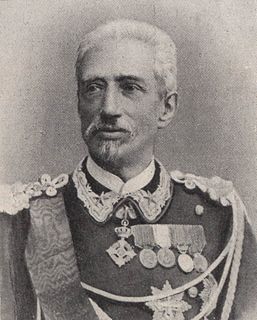 W
WCarlo Felice Nicolis, conte di Robilant, Italian statesman and diplomat, was a native of Turin.
 W
WThomas Francis of Savoy, 1st Prince of Carignano was an Italian military commander and the founder of the Carignano branch of the House of Savoy, which reigned as kings of Sardinia from 1831 to 1861, and as kings of Italy from 1861 until the dynasty's deposition in 1946.
 W
WFerruccio Valobra was an Italian partisan and antifascist.